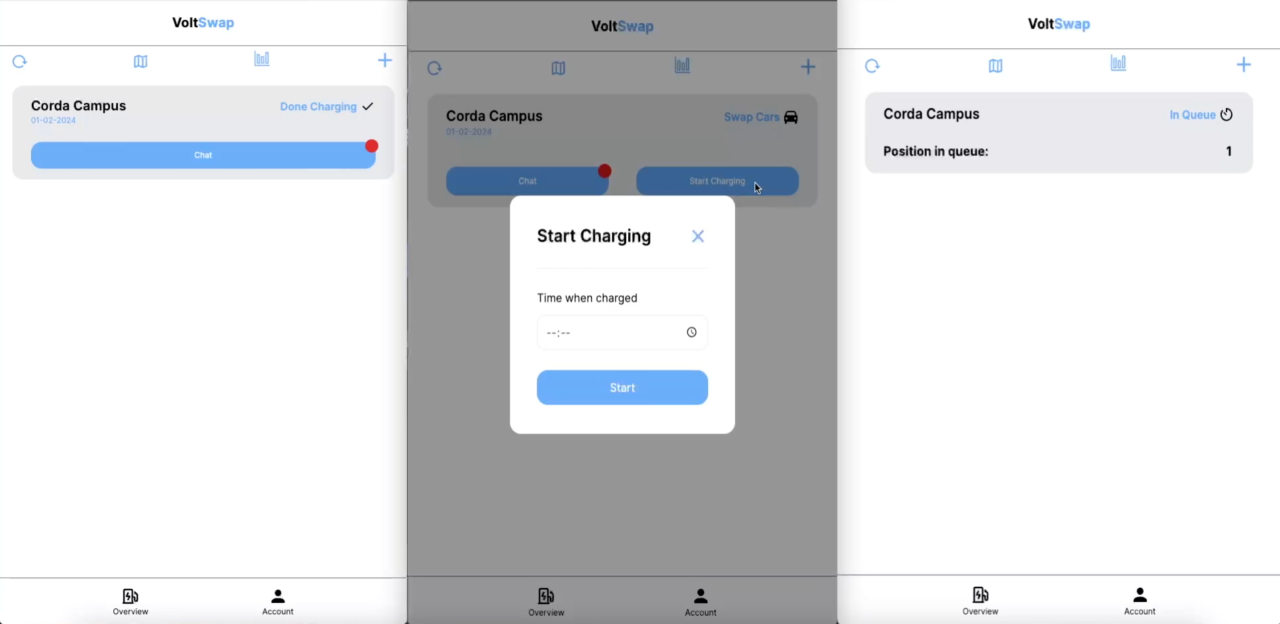
Efficiently Managing Charging Station Occupancy
Elision, a company based in Hasselt, requested the development of a solution to address the inefficient utilization of charging stations located near their headquarters' parking lot. Drivers often leave their electric vehicles occupying charging stations, causing inconvenience for others in need of charging or searching for regular parking spaces. Additionally, Elision expressed interest in a scalable solution that could be offered as a service to other companies.
Solution Overview
After conducting brainstorming sessions and meetings with Elision, we devised a solution centered around a community-driven mobile application. This application facilitates communication among drivers to swap parking spaces when an electric vehicle is fully charged, alleviating congestion at charging stations.
To ensure continuous functionality, the solution involves more than just the mobile application. It encompasses various components such as infrastructure in the cloud, IoT devices, and backend systems.
Technologies Utilized
The Progressive Web Application (PWA) is developed using Next.js, a React framework known for its server-side rendering capabilities and efficient performance.
Main Functionalities
-
Authentication: AWS Cognito is used for user authentication, providing a secure and seamless login experience for users.
-
Chat with Websocket: Real-time chat functionality is implemented using Websockets, enabling drivers to communicate with each other within the application.
-
Queue System: The application features a queue system where users can join a queue to swap parking spaces, and notifications are sent to inform them when it's their turn to swap.
-
Occupied Parking Space Detection: The application uses AI to detect occupied parking spaces, providing users with real-time information about available parking spots.
-
Integration with IoT Devices: IoT devices capture images of parking spaces, which are analyzed by AI to detect occupied spots, improving the accuracy of parking space detection.
Queue System
The queue system in the application allows users to join a queue to swap parking spaces. Users receive notifications when it's their turn to swap, and they can communicate with other users in the queue to coordinate the parking space swap effectively.

Hosting
The application is hosted on AWS Elastic Beanstalk, providing scalability and reliability for handling varying levels of user traffic.
IoT Integration
IoT devices, specifically a GoPro camera connected to a Raspberry Pi, are integrated into the solution to capture images of parking spaces in real-time. These images are then sent to an S3 bucket, where they are retrieved by the AI model for analysis.
AI Integration
The AI integration in the solution involves the use of a YOLO (You Only Look Once) model combined with OpenCV. This AI model is trained to detect occupied parking spaces by analyzing images captured by IoT devices, such as a GoPro camera connected to a Raspberry Pi.
Conclusion
The development of the parking space utilization solution for Elision demonstrates our ability to deliver innovative and scalable solutions to address real-world challenges. By leveraging technologies such as Next.js, AWS services, IoT, and AI, we've created a comprehensive solution that enhances the efficiency of parking space utilization and promotes sustainable transportation practices.